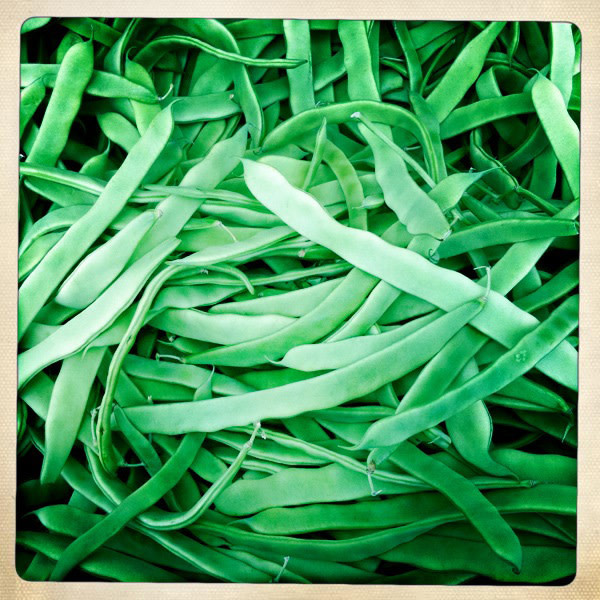Beaned Again

Romano beans are broad, flat, edible-pod green beans. They need not be imported from Rome – they grow in Portland.
So many beans, so little time. It being summer (or is that, “bean summer?”), our farmers’ markets and backyard gardens are overflowing with bounty; beans are well accounted for. Not that I’m a bean counter, mind you, but I do count on a great variety of green beans making their way to my plate each summer.
A tour of fresh green bean varieties could take all summer. First off, they’re not all green – there are yellows, purples, and even mottled purpley-greens. (The purples do turn green once cooked.) There are the thin ones (like the French haricots verts; of course the French ones have to be thin), the broad flat ones (Italian Romanos – no anthropomorphism here), and the super long ones (Asian yard-long beans).
There are the ones that grow in vines on poles (“pole beans,” natch) and those that grow close to the ground (“bush beans”). Some need to be shelled (favas, limas, cranberry beans); others you can eat in their entirety (“edible pod” beans), and, if they’re fresh enough, don’t even need to cook.
While many are typically called “string” beans, usually the string has been bred out of them and they are good to go. Tips can be trimmed if one wants; as the Joy of Cooking diplomatically puts it, “some people do not enjoy green beans unless their tops and tails have been removed.” (I confess to being one of those people – and the only one so picky in my household – but only about the stem tops!)
Romano beans are flat, edible pod, green pole beans. And the other Sunday at the King Portland Farmers Market, they looked delectable.
Back home, I gave them a quick stir-fry (having trimmed the tips), in olive oil with some garlic and cippoline onions (lacey, delicate reddish onions also from the King market), salt and pepper. Letting the onions and garlic get a bit browned, they were a crispy contrast to the tender but still crunchy beans. Be careful not to overcook them – unless you do so deliberately in a slow-cooked dish like NY chef Marco Canora’s “Braised Romano Beans.” Cooking them slowly ‘til soft is the traditional Italian style.
Most varieties of fresh green beans, Romano and other, are also easily accompanied by any number of additions. Try a garlic aioli, or a yogurt sauce (with cayenne or dill). Sprinkle on fresh herbs – parsley, tarragon, basil, ginger – or diced olives, capers, tomatoes and shallots. Roasted nuts are also good. What is your favorite green bean creation?
